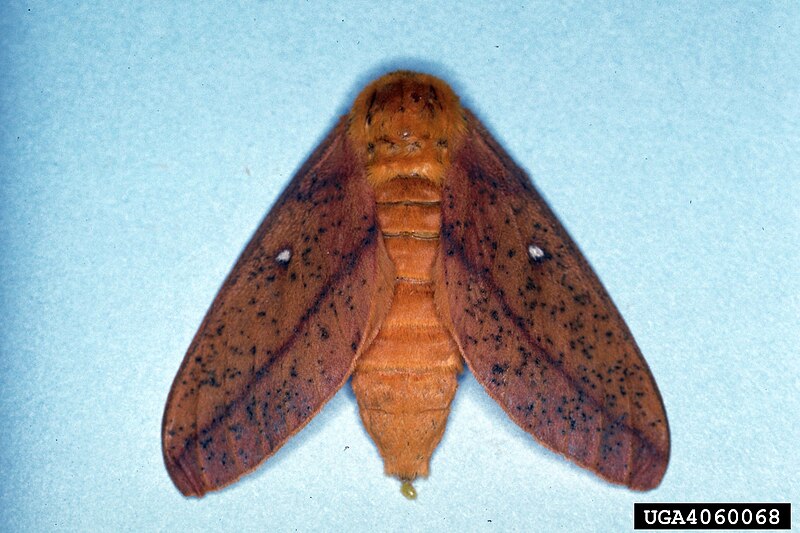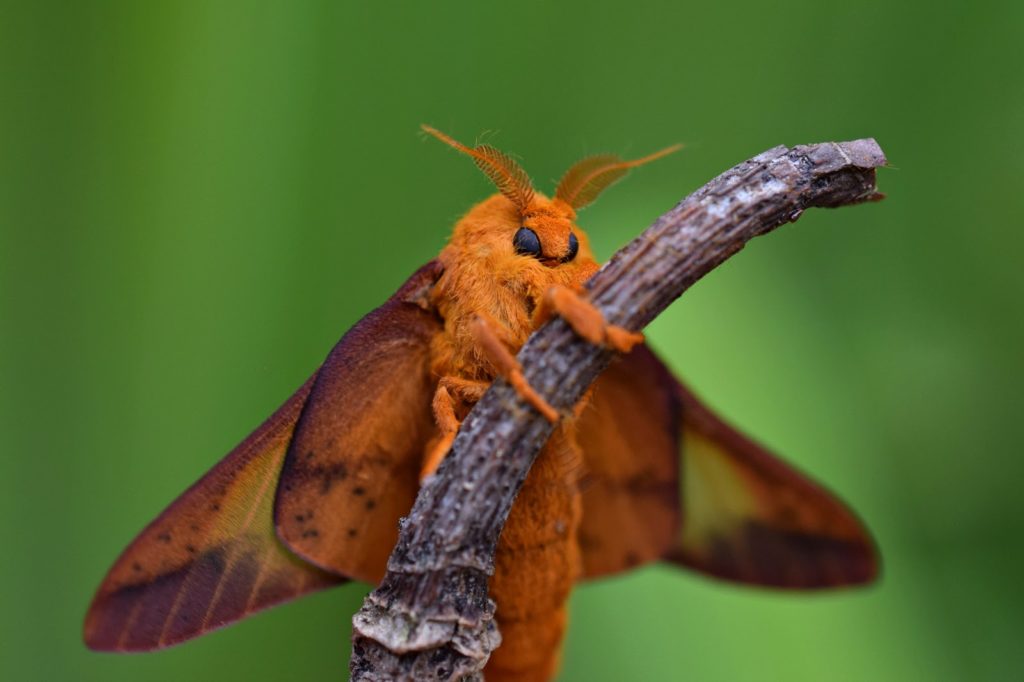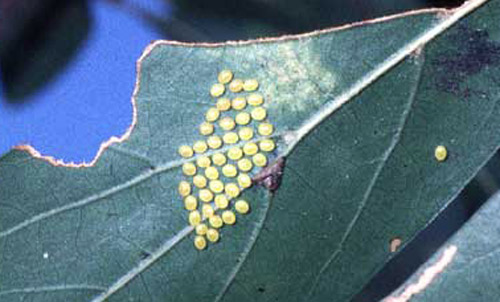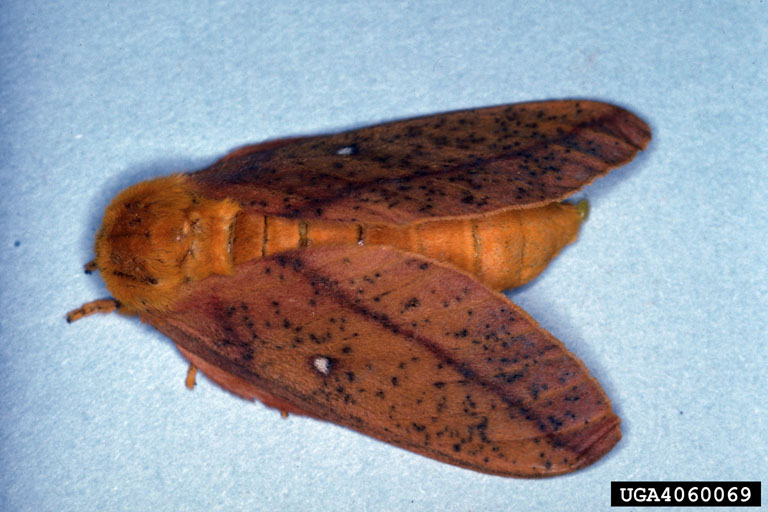Yellow Striped Oakworm Moth (Anisota peigleri)
Yellow striped oakworm moth of the Saturniidae family has a wide range, covering a major part of the United States. The larvae of this species have yellow stripes running down their body that may have resulted in their name.
en.wikipedia.org
Scientific Classification
- Family: Saturniidae
- Genus: Anisota
- Scientific Name: Anisota peigleri
Description and Identification
Caterpillar
The newly emerged larvae appear yellow with black head and two horns rising from its thorax’s second segment. During the initial stage, they remain together and primarily consume the leaf’s soft parts skeletonizing it completely. They gradually shed their skin and head capsule entering the second stage, where they have a yellow coloration. In their third and fourth phase, they turn black with stripes of yellow running through their body. They even develop spiny projections on their back.
Adult Moth
Sexual Dimorphism: Present
Like the pupa, the adult female moths are also bigger than their male counterparts.
Color and Appearance
Males –
Forewings: When opened, it has a dark reddish-brown coloration, with small and large white spots and translucent patches. When closed, the color and pattern remain the same, with the two white dots being visible.
Hindwings: When opened and closed, they have a reddish-brown appearance sans any markings.
Females –
Forewings: When opened, they are reddish-orange withwhite spots, dark lines, and several speckles. When closed, the color remains unchanged, with fewer patterns visible.
Hindwings: When opened, the hindwings appear paler with indistinct lines. When closed, the color is the same.
Average Wingspan: 4.3 -6.9 cm
Flight Pattern: Consistent
Season: Mid August – Early September
Quick Facts
| Distribution | Southeastern Kentucky, eastern Tennessee, southwestern Virginia, western parts of North and south Carolina, central Georgia, north-central Florida |
| Habitat | Deciduous forests |
| Predators | Jumping spiders, wasps, birds, mice, moles |
| Lifespan of Adults | Not recorded |
| Host Plants | Different oak species |
| Diet | Adults don’t feed |
Did You Know
- Jules C. E. Riotte described them first in the year 1975.
- In Florida, this moth species caused significant damage by defoliating water oak, shumard oak, and laurel oak species between 1996 and 2001.
- Though the larva in the later instar stage has spines on its body, it is not poisonous and does not harm humans.
Scientific Classification
- Family: Saturniidae
- Genus: Anisota
- Scientific Name: Anisota peigleri







